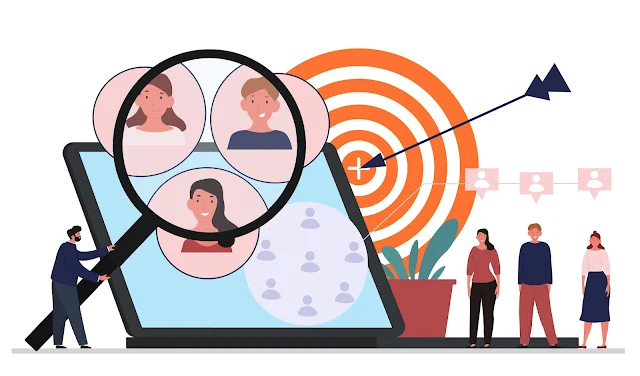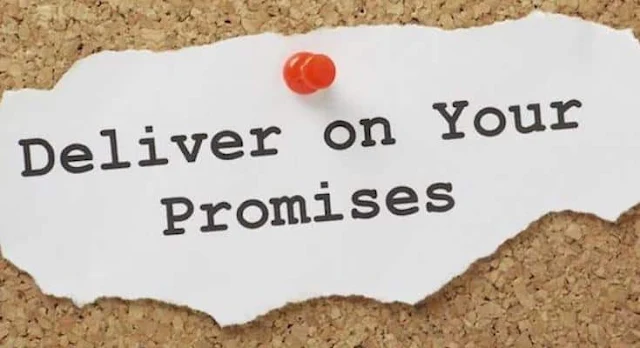In this article, I will explain the top 5 examples of common marketing mistakes that businesses should avoid:
1. Failing to define a target audience
One of the biggest marketing mistakes businesses make is not clearly defining their target audience. Without a clear understanding of who their ideal customer is, businesses may struggle to create effective messaging and target their marketing efforts.
2. Ignoring customer feedback
3. Relying too heavily on one marketing channel
Businesses that rely too heavily on one marketing channel, such as social media or email marketing, may miss out on opportunities to reach new audiences. It's important to diversify marketing efforts and explore multiple channels to reach a wider audience.
4. Failing to track and analyze data
5. Overpromising and underdelivering
Businesses that overpromise in their marketing materials and fail to deliver on those promises can quickly lose credibility with customers. It's important to be honest and transparent in marketing materials and ensure that products and services live up to customer expectations.
Overall, businesses can avoid these marketing mistakes by understanding their target audience, listening to customer feedback, diversifying marketing efforts, tracking and analyzing data, and setting realistic expectations for their products and services.
Effective ways to track and analyze data
There are many effective ways to track and analyze data in marketing. Here are a few examples:
1. Google Analytics
2. Social media analytics
3. Email marketing analytics
4. Customer surveys
Customer surveys can be a valuable source of data for businesses. By asking customers for feedback on products, services, and marketing efforts, businesses can gain insights into what's working and what's not.
5. A/B testing
As mentioned in previous blog, A/B testing involves testing two versions of a marketing campaign to see which one performs better. This is an effective way to track and analyze data on engagement and conversion metrics.
Overall, there are many effective tools and methods for tracking and analyzing marketing data. By using these tools to gather insights and make data-driven decisions, businesses can optimize their marketing efforts for better results.
Best practices for conducting customer surveys
Here are some best practices for conducting customer surveys:
1. Define clear goals and objectives
Before conducting a customer survey, it's important to define clear goals and objectives. This will help ensure that the survey is focused and relevant to the business's needs.
2. Keep it short and simple
Customers are more likely to complete surveys that are short and easy to understand. Keep questions concise and avoid using industry jargon or technical terms.
3. Use a mix of question types
A mix of multiple-choice, open-ended, and rating scale questions can provide a well-rounded view of customer feedback. However, be careful not to overload the survey with too many questions or it may become overwhelming.
4. Offer incentives
Offering incentives, such as discounts or free products, can increase the response rate for customer surveys. However, be sure the incentive is relevant to the survey and doesn't compromise the integrity of the responses.
5. Analyze the data and take action
Once the survey is complete, analyze the data and use the insights to inform business decisions. It's important to take action on the feedback and communicate any changes or improvements to customers.
6. Follow up with customers
Following up with customers after the survey can show that their feedback is valued and help build stronger relationships. Consider sending a thank-you email or offering a discount code as a token of appreciation.
Overall, customer surveys can provide valuable insights into customer preferences, needs, and behaviors. By following best practices, businesses can conduct effective surveys that provide actionable data for improving products, services, and marketing efforts.
Best ways to follow up with clients after a survey
Here are some effective ways to follow up with customers after a survey:
1. Thank-you email
Sending a thank-you email is a simple and effective way to show customers that their feedback is appreciated. This can also be an opportunity to summarize the survey results and communicate any changes or improvements that will be made as a result of their feedback.
2. Personalized response
A personalized response can make customers feel valued and appreciated. Consider responding to customers individually and addressing any specific comments or concerns they raised in the survey.
3. Incentives or promotions
Offering incentives or promotions can be a way to show appreciation for customers' time and feedback. This can also encourage repeat business and loyalty.
4. Follow-up survey
Following up with a second survey can show customers that their feedback is taken seriously and can provide additional insights into their preferences and needs.
5. Phone call or video chat
A phone call or video chat can be a more personal way to follow up with customers after a survey. This can be an opportunity to ask additional questions and gather more detailed feedback.
Overall, following up with customers after a survey can help build stronger relationships, show appreciation for their feedback, and provide an opportunity for businesses to improve their products, services, and marketing efforts.
.png)
















0 Comments